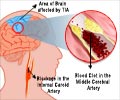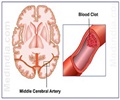Researchers from Loyola University Chicago Stritch School of Medicine in Maywood, Ill have reported a technique that potentially could restore functions to patients weeks or even months
Researchers from Loyola University Chicago Stritch School of Medicine in Maywood, Ill have reported a technique that potentially could restore functions to patients weeks or even months after a stroke.
The technique involves jumpstarting the growth of nerve fibres to compensate for brain cells destroyed by the stroke.It is necessary that a stroke patient get treatment within approximately the first three hours of symptoms. Jumpstarting the growth of nerve fibres to compensate for brain cells destroyed by the stroke can help reverse stroke damage.
The new technique developed by Kartje and colleagues is called anti-nogo-A immunotherapy. It has dramatically improved functions in lab animals that have experienced strokes.
"In the best-case scenario, this would open up the window of time that people could recover and go back to normal functional status," said Gwendolyn Kartje, MD, Ph.D., a professor in the department of cell biology, neurobiology and anatomy and department of neurology at Loyola University Chicago Stritch School of Medicine in Maywood, Ill. and chief of neuroscience research at Edward Hines Jr. VA Hospital in Hines, Ill.
Nogo-A is a protein that inhibits the growth of nerve fibres called axons. It serves as a check on runaway nerve growth that could cause a patient to be overly sensitive to pain, or experience involuntary movements. In anti nogo immunotherapy, an antibody disables the nogo protein.
The left side of the brain controls movements on the right side of the body, and vice versa. Thus, a stroke on the left side of the brain can cause paralysis on the right side of the body.
Advertisement
Source-ANI
SRM














